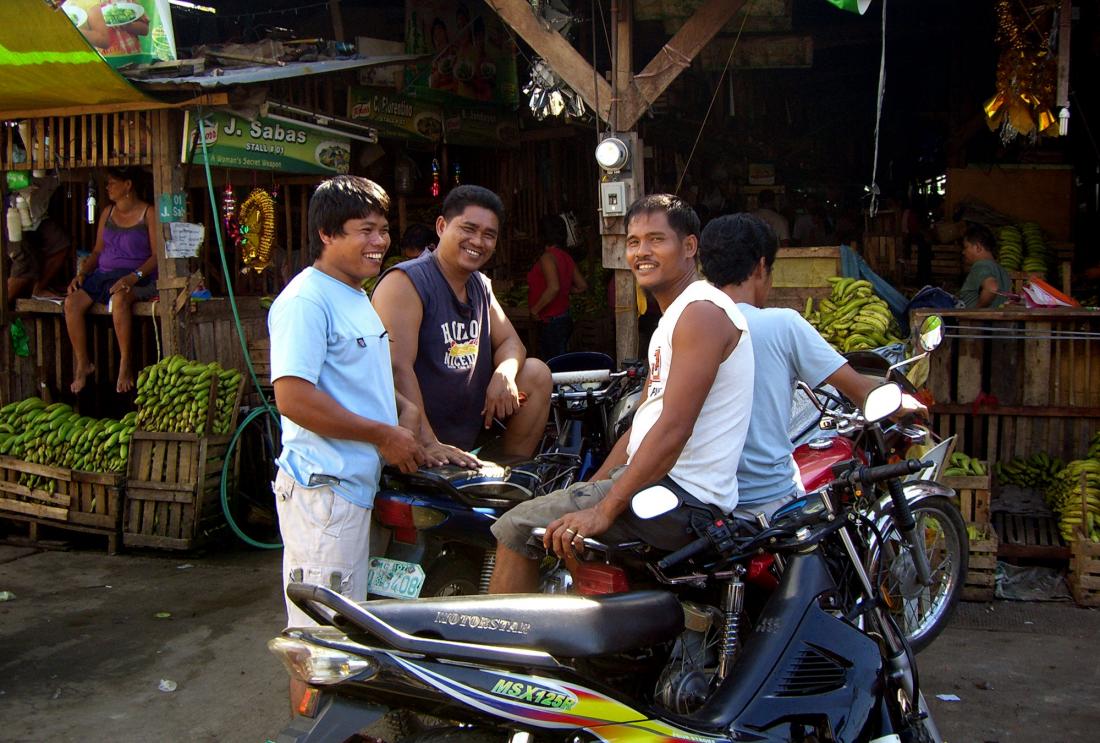Financial Education vs. Access to Finance Among Filipino Migrants
- Urban population
- Earnings and income
- Credit
- Financial literacy
- Information
- Insurance
- Savings
International remittances are an important financial tool for many developing countries, and many organizations offer financial products or financial education services to help families manage the remittances they receive. Researchers provided families with financial products and financial education in the Philippines to test whether the two services influenced each other. They found that financial education did not affect take-up of financial products, and that access to financial products did not affect demand for financial education. Neither intervention had an impact on household savings, remittances, consumption, or well-being.
Problema de política pública
The number of individuals living outside their countries of birth reached 244 million people in 2015, of which 190 million were born in middle- and low-income countries. Many of these migrants send remittances back to their countries of origin. Migrant remittances to developing countries amounted to US$432 billion in 2015, roughly three times official development aid. These remittances are an important but poorly understood type of financial transaction. The prospect that migrants might be encouraged to send more remittances, and that remittances might be better leveraged for economic development, has led to substantial interest in development policies related to remittances.
Many governments and non-government organizations provide either access to financial products or financial education to transnational households to increase their use of financial products including credit, savings, and insurance. However, little evidence exists on the possible interactions between these two efforts. Financial education might encourage households to use financial services by improving their knowledge about these services. Similarly, access to financial products might encourage households to seek out financial education to make better use of their financial products. Does access to financial products and financial education affect each other?
Contexto de la evaluación
The Philippines is the second largest migrant-sending country and the third largest remittance-receiving country in the world. This evaluation took place in and around Cabanatuan City in Central Luzon. Participating households had at least one member who had moved to another country in the past three years. Although average education levels were quite high among participating households, financial literacy was quite low—only one in five household heads answered two financial literacy questions correctly, suggesting that financial education could benefit these households. Before the interventions began, 52 percent of households had formal bank accounts, 31 percent had some form of formal credit (from a bank, microfinance lender, or private lender), and 29 percent had some form of informal credit (from family, friends, or neighbors). Forty-two percent of the sample indicated they were satisfied with their savings.

Detalles de la intervención
Researchers conducted a randomized evaluation to test the impacts of access to financial products and financial education on household saving, borrowing, insurance, and well-being. Researchers partnered with the Overseas Workers Welfare Administration (OWWA), the primary government agency working to promote the well-being of overseas Filipino workers, to identify 1,808 households in and around Cabanatuan City with at least one household member working abroad. These households were then randomly assigned to one of four groups:
- Financial education (517 households): Households were offered 500 pesos (about US$11) to attend a one-day workshop on financial education administered by local microfinance institution Alalay sa Kaunlaran Inc. Global Ltd. (ASKI). The workshop covered topics including financial planning, budgeting, savings, and credit management.
- Financial products (369 households): Households were invited to open bank accounts at the Bank of the Philippine Islands (BPI). ASKI also offered households microloans for small enterprise investments and a micro-insurance product, which covered losses caused by accidental death or bodily injury. Households received 100 pesos (about US$2) per financial product they took up.
- Financial education + financial products (488 households): Households were invited to attend the financial education workshops and offered the same BPI and ASKI financial products. Households were offered the same financial incentives as the education- and products-only groups.
- Comparison group (434 households): Households received no financial training and were not offered financial services or products.
Resultados y lecciones de la política pública
Overall, researchers found that financial education did not affect demand for financial products, and that access to financial products did not affect the likelihood of attending financial education workshops. Neither access to financial products nor financial education had an impact on household consumption, savings, borrowing, income, remittances, or life satisfaction.
- Financial products: By providing access to three types of financial products, researchers found that households did not lack access to savings accounts or loans, but that they might lack access to insurance. Only nine individuals opened savings accounts and only two took out micro-loans, suggesting that access to financial products may not be a barrier for households who would like to save or borrow money. On the other hand, households who were offered micro-insurance with or without financial education were 28.0 and 25.1 percentage points more likely to take it up, respectively, than the comparison group, in which zero households purchased insurance.
- Financial education: Households that were offered financial education held more bank accounts and took out smaller loans than households that were not offered financial education. Among households who took out loans, those offered financial education were more likely to borrow from formal credit sources.
Altogether, these results suggest that, where certain financial services already exist (such as savings and credit in this context), financial education could be prioritized over expanding access to financial products. On the other hand, financial access interventions can help to promote the adoption of previously unavailable financial products (like insurance in this context).


